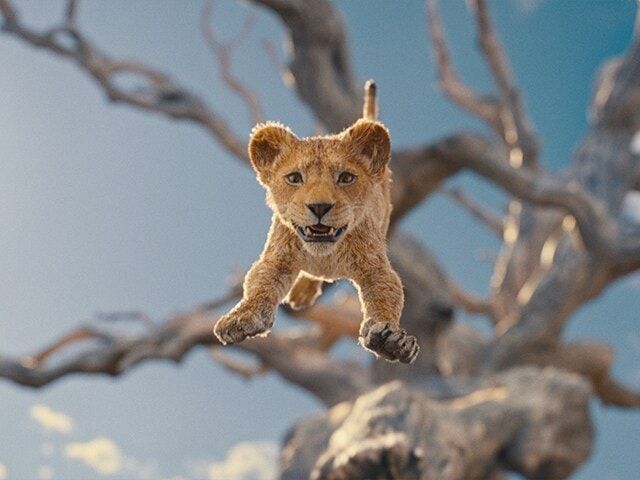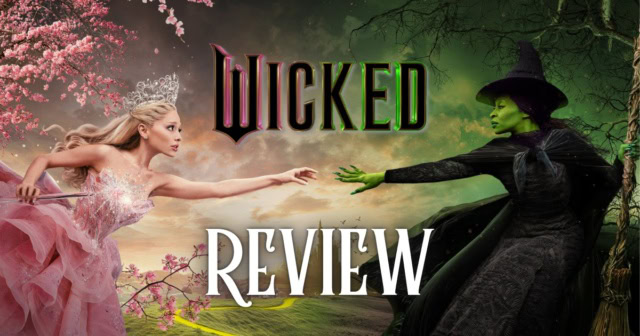‘Mufasa: The Lion King’ Prequel and Barry Jenkins’ Vision

Like many of you, I was ready to deride Barry Jenkins for “selling out” after accepting the gig of helming the prequel to one of the most soulless and unimaginative remakes ever made in Mufasa: The Lion King. Walking into the theatre to witness this would-be catastrophe in IMAX 3D, I couldn’t wrap my head around why Jenkins wanted to subject himself to the soul-crushing Disney machine and bring such a story to life; apart from quickly making millions of dollars to finance his future independent projects.
To be honest, one can’t fault Jenkins for wanting the bag, especially considering how he longed to make his mark in cinema before winning an Academy Award for his work in 2016’s Moonlight. And if you were in the same position as him, where endless opportunities to make money beyond your wildest dreams after winning an Oscar would suddenly pop up, you’d likely do the same. Of course, Jenkins could’ve chosen something more fulfilling in the world of big-budget filmmaking: an action/fantasy production, a Marvel movie, or even doing what many indie filmmakers are doing nowadays (such as Lee Isaac Chung, Kogonada, The Daniels, and David Lowery), helming several episodes of Star Wars Disney+ television series.
But he picked Mufasa: The Lion King, which seems like an impossible task to turn the photoreal world of Pride Rock into something good, let alone decent. Jon Favreau’s 2019 photorealistic remake of Ron Clements and Jon Musker’s 1994 animated classic is one of the worst movies to have ever come out of the Disney ‘live-action remake’ mandate. It is so bereft of any artistic value that one wonders why it even made more than $1 billion at the global box office. It offers absolutely nothing for the audience, who could’ve stayed home and watched one of the greatest animated movies made in the Renaissance era instead.
The original Lion King stands the test of time as a nourishing, artistically staggering piece of work that isn’t afraid to get to dark places. It ensures children reckon with the idea of death before fully understanding and eventually coming to terms with it as they mature.
One only needs to look at Mufasa’s (James Earl Jones) death at the hands of Scar (Jeremy Irons) in the 1994 film versus the 2019 one to see how bad the remake truly is. Sucking expressivity in the animation and the animals’ facial expressions, Favreau turns these larger-than-life characters into artificial constructions devoid of any emotion, or tangible feeling; even if it wants to (badly) recreate the juxtaposition between Mufasa’s fall and Simba’s childlike eye witnessing it all. Since such a dreary affair made a billion at the box office, the next logical step is to make another one; but with a genuinely talented filmmaker, who has way more to lose than Favreau, now going all in on killing the magic of cinema with his anti-art Volume and the upcoming The Mandalorian & Grogu.
To say I wasn’t looking forward to watching this would be the understatement of the year, especially in an era where cinema has become far more listless as an art form; where synthetic images are now supplanting human-made creativity and bringing nothing exciting to the table.
A film like Here, for example, is a purely “digital file’” with zero emotions or sincerity through its construction of de-aged protagonists living in an entirely plastic environment. The results are garish at best and soul-crushing at worst because they defeat the purpose of what has made cinema transcend the test of time as the most honest and artistically compelling medium of all. And directors with some pedigree, unfortunately, can’t do anything about the machine they are now stuck in, forced to turn in junk they would simply like to wash themselves off as soon as possible.
But what happens when a storied auteur (in the complimentary sense of the term) like Barry Jenkins decides to take a crack out of the story of Mufasa from an entirely digital environment and attempts to imbue some form of artistry, and feeling? Shockingly, a lot.
The plot of Mufasa: The Lion King
Of course, that’s not to say that he won’t fall prey to the trappings of a pre-existing IP. In this case, he frames Mufasa’s (Aaron Pierre) upbringing from stray to the King of Pride Rock through Rafiki (John Kani) telling a story to Simba (Donald Glover) and Nala’s (Beyoncé Knowles-Carter) daughter, Kiara (Blue Ivy Carter), with Timon (Billy Eichner) and Pumbaa (Seth Rogen) bringing their own commentaries to the mix. And these parts, where Jenkins and screenwriter Jeff Nathanson go The Lion King 1 ½, don’t work.
Rogen and Eichner are a fun pair, to be sure; but the material they’re given removes the seriousness of the main narrative, which is the burgeoning friendship/brotherhood between Mufasa and Taka (Kelvin Harrison Jr.), as the latter lion saves the cub from drowning after a flood separates him from his parents (voiced by Anika Noni Rose and Keith David).
Since he is not part of Obasi’s (Lennie James) clan, and Taka is propped up as the future king, Mufasa is taken care of by Eshe (Thandiwe Newton) and learns how to hunt. This allows him to develop a keen sense of perception (through his smell) to be one with nature. But they are soon stalked by a white lion clan led by Kiros (Mads Mikkelsen), whose power-hungry, despotic goals are to rule all of the pride lands and exact revenge on Mufasa for having killed his son in battle. Taka, who surveyed the two, ran away in fear, angering his father for not wanting to step up as the future king.
As Mufasa and Taka flee, they eventually meet Rafiki, Zazu (Preston Nyman), and Sarabi (Tiffany Boone), whom we know will eventually fall in love with Mufasa and become Pride Rock’s queen. As on-the-nose as Mufasa: The Lion King’s symptoms of prequelitis are (which explains how Taka followed a dark path, got his scar (and name), and how Pride Rock was founded in a lush idyll called Milele), more dramatic beats of its story seem secondary to explaining trivial things that are usually stronger when left to the aura of mystery.

Mufasa is surprisingly moving in its artistic expression
And even amidst glaring issues, Jenkins’ visualizations of its animal characters are oddly endearing and surprisingly moving. With cinematographer James Laxton (his closest collaborator), Jenkins tries to create artful, almost poetic compositions to digitized environments – and creatures – in an attempt to experiment with technologies he is entirely unfamiliar with. Using Favreau’s photorealism as a mere foundation, he challenges his perception of what cinema should strive for by giving expressivity to characters whose emotions are complex to read on their faces and even frequently distort perspective by employing artificial fish-eyed lenses and Snorricams to provide movement and a sense of spatial scale to a world that doesn’t exist beyond a computer.
It makes early action scenes, such as a harrowing flood or stampede, feel urgent and profoundly impactful in the eyes of the lions we follow. And once we get to the eventual Shakesperean transformation from Taka into Scar, there’s a sense of pure terror reflected into the lion’s eyes that wasn’t perceptible in Favreau’s version. Those subtle moments of clarity give Mufasa: The Lion King its intriguing raison d’être in the technical challenge Jenkins gives himself. How do I make purely artificial images exciting and full of real, tangible characters who imbue enough dramatic power for the audience to feel invested in their story?
First, you get Lin-Manuel Miranda to write songs that solidify Taka and Mufasa’s bond (“I always wanted a brother”) at a pivotal point. Then, you give their actors enough room to breathe so their renditions of the iconic characters don’t erase the work veteran actors like James Earl Jones, Jeremy Irons, and Chiwetel Ejiofor brought to Mufasa and Scar. Aaron Pierre knows he isn’t James Earl Jones and will never reach the same heights he did when breathing life into Mufasa. However, he also knows he isn’t imitating Jones but a younger version of the character whose mistakes and early on fears will make him a much stronger king when he eventually reaches that status in The Lion King.
It’s Pierre and Harrison’s turns as both Mufasa and Taka that encourage us to keep watching and pay attention to how Jenkins creates movement and emotion with the constraints he is forced to work with. At some point, we begin to forget that this entire film is constructed through a computer. Jenkins makes us feel the grass, smell the flowers, and pay attention to how the animals are differently textured, where each bead of sweat or reverberating plant has an effect on how Mufasa and his friends operate in the often challenging environments they explore.
Final thoughts on Mufasa: The Lion King
The images have a truth to them that the Favreau version severely lacked. Of course, the visual effects are show-stopping, but by using a specific language that creates poetry, Jenkins achieves something Favreau didn’t: finding purpose in something that hasn’t any.
It’s not a simple demonstration of how far technology has advanced since the release of James Cameron’s Avatar. It’s a profoundly authentic piece that’s decidedly Jenkins, even if he can’t fully exalt his own vision to the extent he’d likely want. By challenging himself and attempting to stimulate audiences through a machine that doesn’t know the word “emotion”, Jenkins is at his most vulnerable, which makes Mufasa: The Lion King equally compelling as his best-ever film, Medicine for Melancholy, though for entirely different reasons.
As a result, Jenkins can’t be derided for trying to infuse some life into the prequel to one of the most lifeless films ever made. And he mostly succeeds, which is a testament to his singular artistic talent. His career is not only completely unscathed by experimenting with tools he was completely unfamiliar with before taking the gig, but he’ll also be able to make even better movies in the independent sphere with this experience under his belt. The jury’s still out on that front, for sure, but my gut feeling is that his next project will likely be his best yet…
Paddington In Peru is a Near-Perfect Family Tale




